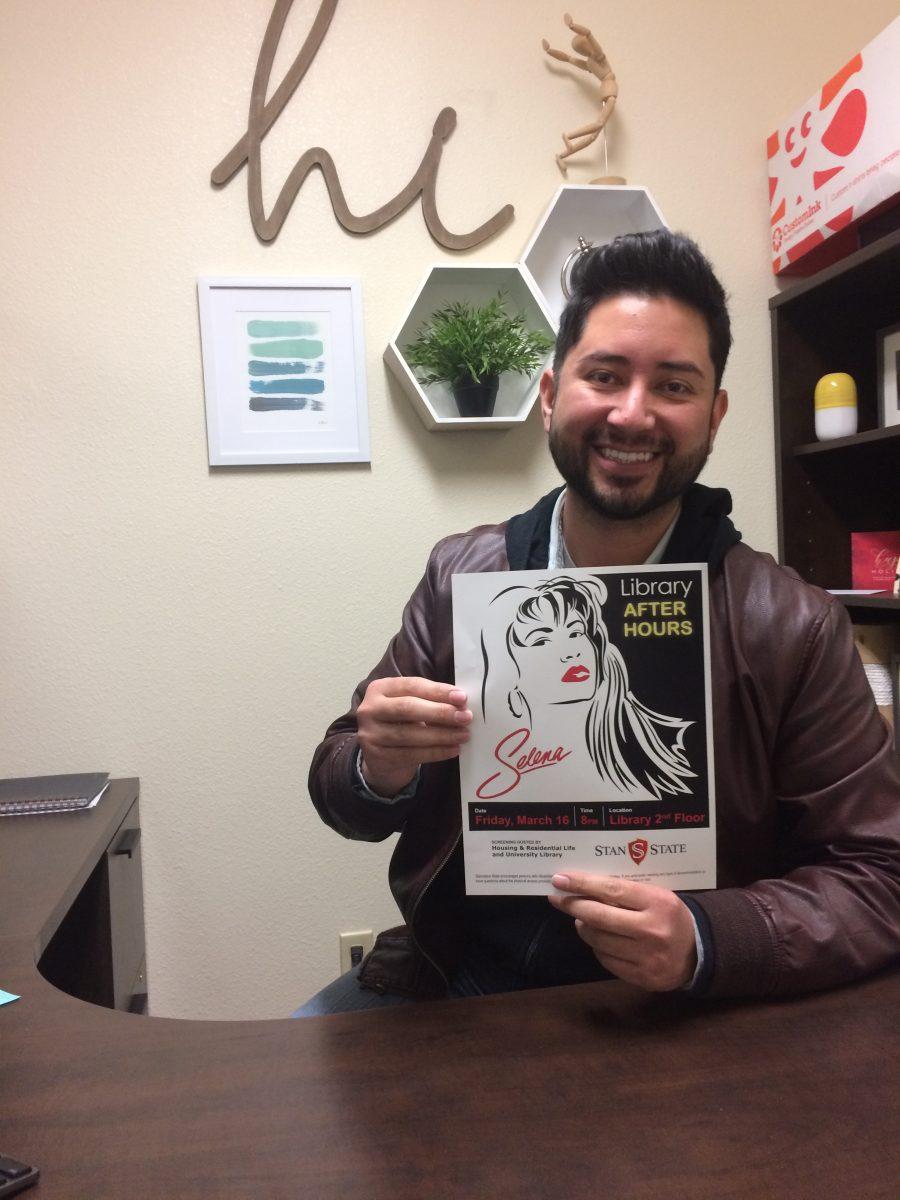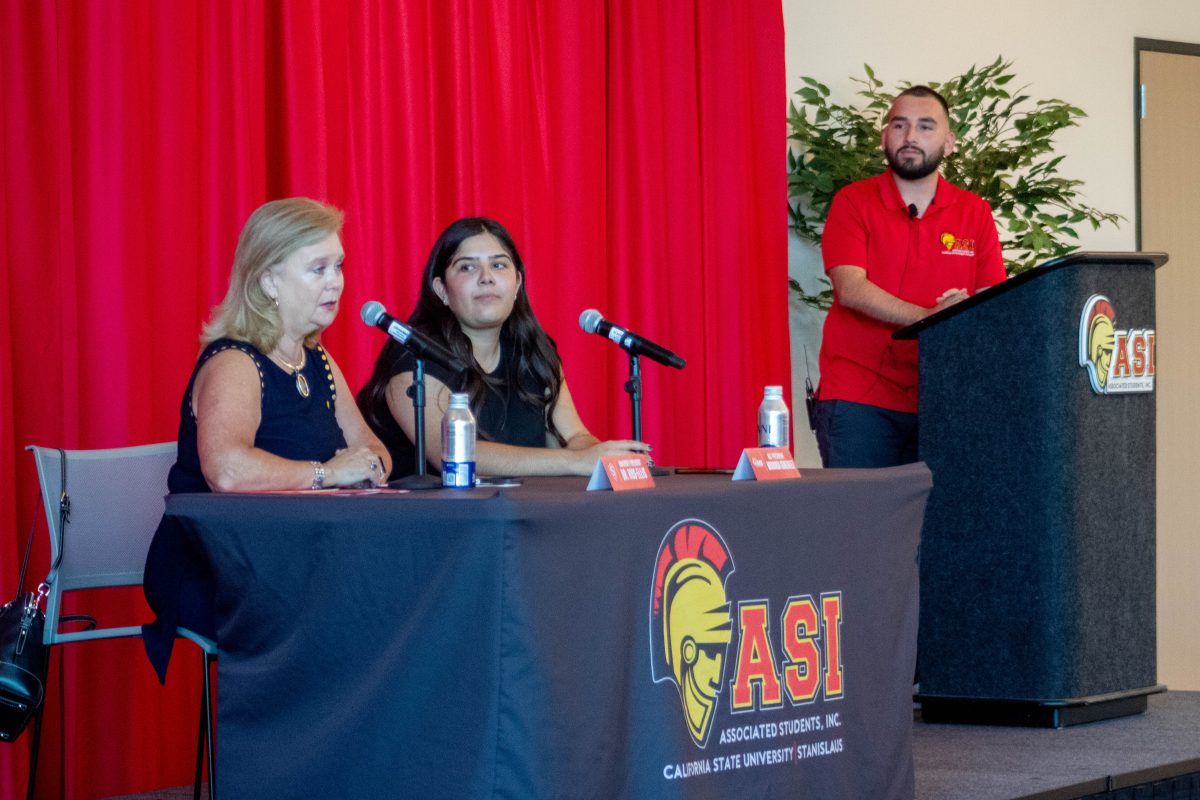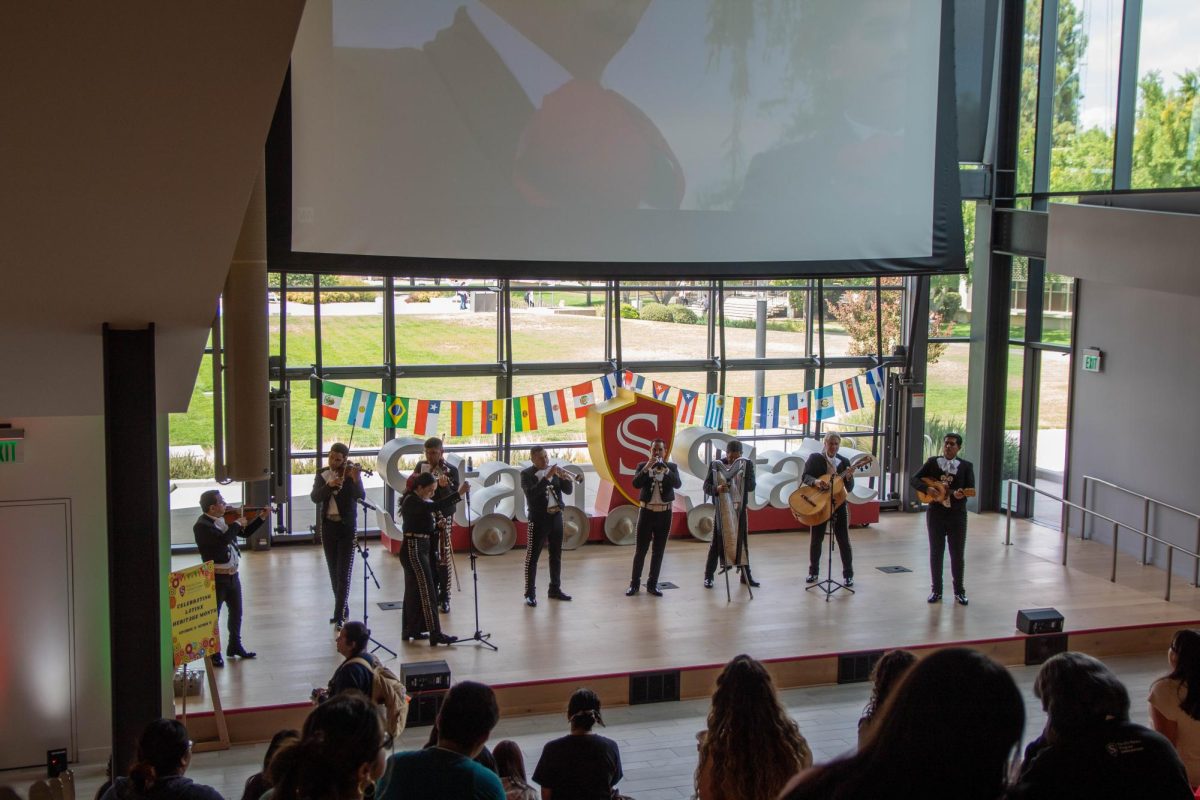Nearly 23 years after her tragic death, Selena Quintanilla’s status as a pop culture icon and a heroine of the Latinx community is stronger than ever.
The Vasche Library and Housing & Residential Life will collaborate to celebrate Selena’s memory by hosting a movie night showing of Selena, the 1997 Warner Bros film that stars Jennifer Lopez and retells the beloved Quintanilla’s rise to fame, iconic musical career and tragic murder.
“When I think of Selena, she’s such an icon. Not only in the Latino community or Latinx community, but just with people in general,” Miguel Pulido, the Communications Specialist for Housing who is working with the library to plan the event to be held, said. “I think her story is so universal and it touches so many lives…I think people should know about her.”
Selena’s fame, influence and widespread popularity show no signs of slowing down, even over two decades after her untimely death.
After a Change.org petition gathered over 37,000 signatures from fans, MAC Cosmetics released a line based on the items in Selena’s own makeup case. The collection quickly sold out and is widely regarded as the cosmetic company’s best-selling celebrity line of all time.
More recently, both Demi Lovato and Kim Kardashian donned the singer’s famous purple jumpsuit, bangs and red lips to pay tribute to Selena last Halloween.
On Mar. 1, Texan grocer H-E-B, partnered with the Selena Foundation, ignited a frenzy in Selena fans when it released limited edition, reusable shopping bags with Selena’s image superimposed with the words, “Queen of Cumbia.”
“Whether it’s the shade of the MAC lipstick they’re using that just really compliments their face, whether it’s the song that they’re going to be bumping on the way to the club…there’s aspects of Selena in everyday culture. And that’s still relevant through the generations,” Pulido said.
Andres Olmedo (junior, Kinesiology), who identifies as a Chicano, remembers her music inspiring his adolescence.
“The big red lips, Selena’s image…she set so many trends that are still popular today,” Olmedo said.
Pulido also emphasized the timelessness of Selena’s beauty and fashion.
“Whether it be through the comeback of crop tops or bustiers, or the red lipstick, or the bangs, that was all Selena…I think some of her most iconic looks, you could still replicate them today, and they’d still kill the runway,” he said. “Timeless is what she is.”
But Selena’s influence goes beyond her striking beauty and ageless fashion. Her music transcends generations and evokes a strong feeling of nostalgia and pride for members of the Latinx community.
Pulido remembers his childhood where Selena’s songs played in the background of his memories.
“She would come out on the big shows on the Spanish networks like Cristina or Sabado Gigante, so she was always in the background and not in the forefront of our lives,” he said.
He recollected how Selena, a third generation Texan of Mexican descent, didn’t grow up speaking Spanish but instead learned the language through her music.
“In some of her initial interviews I remember she would mix up words, she would speak in a broken Spanish accent, but that was so relatable to us because that’s how we felt when we spoke English,” he added.
Selena’s worldwide popularity only proves the importance of diverse role models for people of color, especially for young fans who want to see someone on stage who looks like them, who speaks and acts and sings like them. Selena was a Mexican-American, specifically a Texan or Tejano, who expressed and celebrated her multiple identities with ease.
“To not need to be compartmentalized in all these multiple identities, but being able to be all of them, all the time, here and present at the moment…I think that’s what Selena did for us, she was able to show that you could be multiple identities at the same time and be proud of it,” Pulido said.
Before her fame among the Latinx community, Olmedo recalled, people like Madonna dominated in pop culture.
“Then you had Selena, who is exotic and bilingual and made Spanish music popular in the States for the first time. Before Rhianna and Beyoncé, it was her.”
To this day, Selena’s songs send a powerful message: One of love, of heartbreak and one that recalls strong memories for many of those who grew up with her music. Telling these stories and featuring such a culturally significant and inspiring figure was important when choosing a film for the Library After Hours event.
“We want our films to reflect the diversity of our campus,” said Outreach Librarian Cat Hannula, who is collaborating with Pulido to plan the event.
Pulido said that students “can expect a night of nostalgia…a flashback of memories with families.”
Pulido and Hannula, who hosted a showing of Hidden Figures last semester, plan to collaborate more in the future to feature similarly diverse and culturally important films for Library After Hours events.
“I think [we] can expect people to just relive the moments and those memories of an icon in our community—not just in our community, the Latinx or Chicano community, but in the community at Stan State,” Pulido said.
Similarly, Hannula emphasized the importance of building the campus community by offering more events like Library After Hours for students.
“Her [Selena’s] story is timeless. Who doesn’t want the story of a talented young person with limitless potential…whose, unfortunately, life was cut short?…It’s a great movie, it’s a great person, it’s a great event, it’s a great collaboration between us and the Library,” Pulido said.
The Library After Hours showing of Selena is this Friday at 8 p.m. in the Library, 2nd floor. Admission is free for all students and food and refreshments will be provided.











